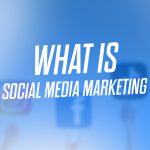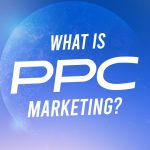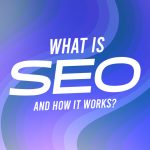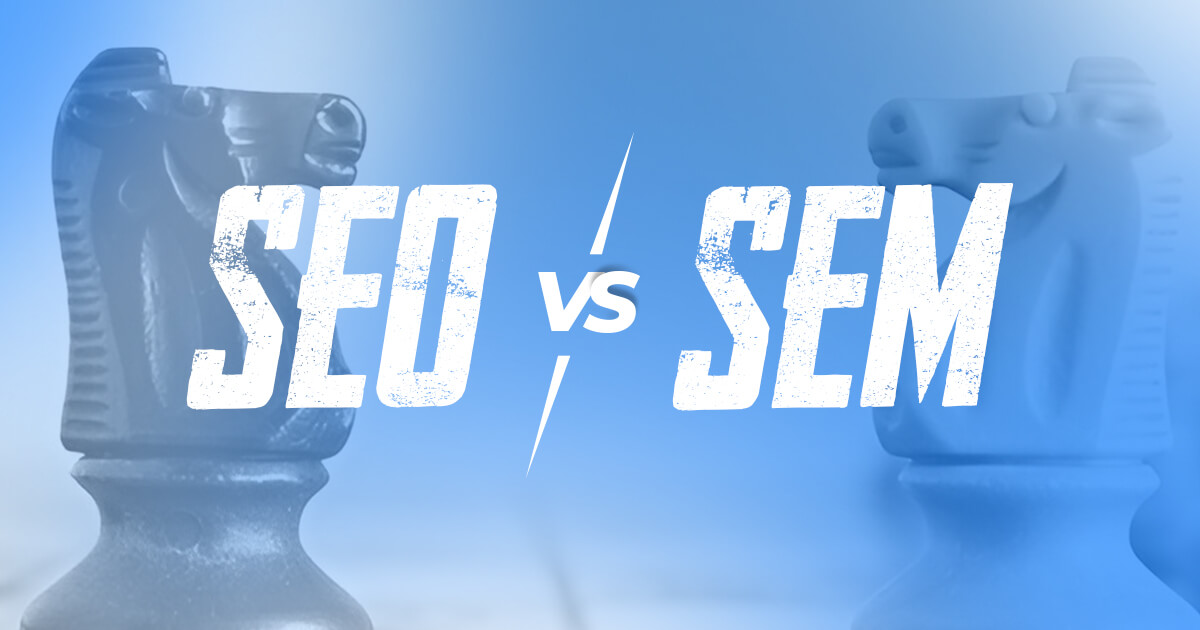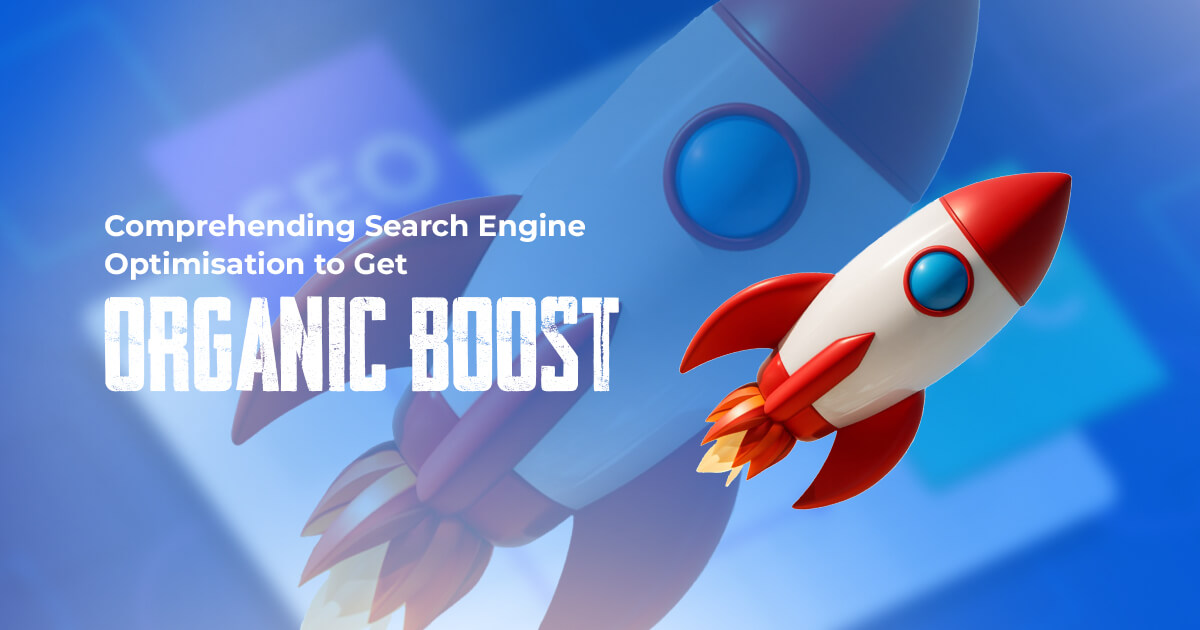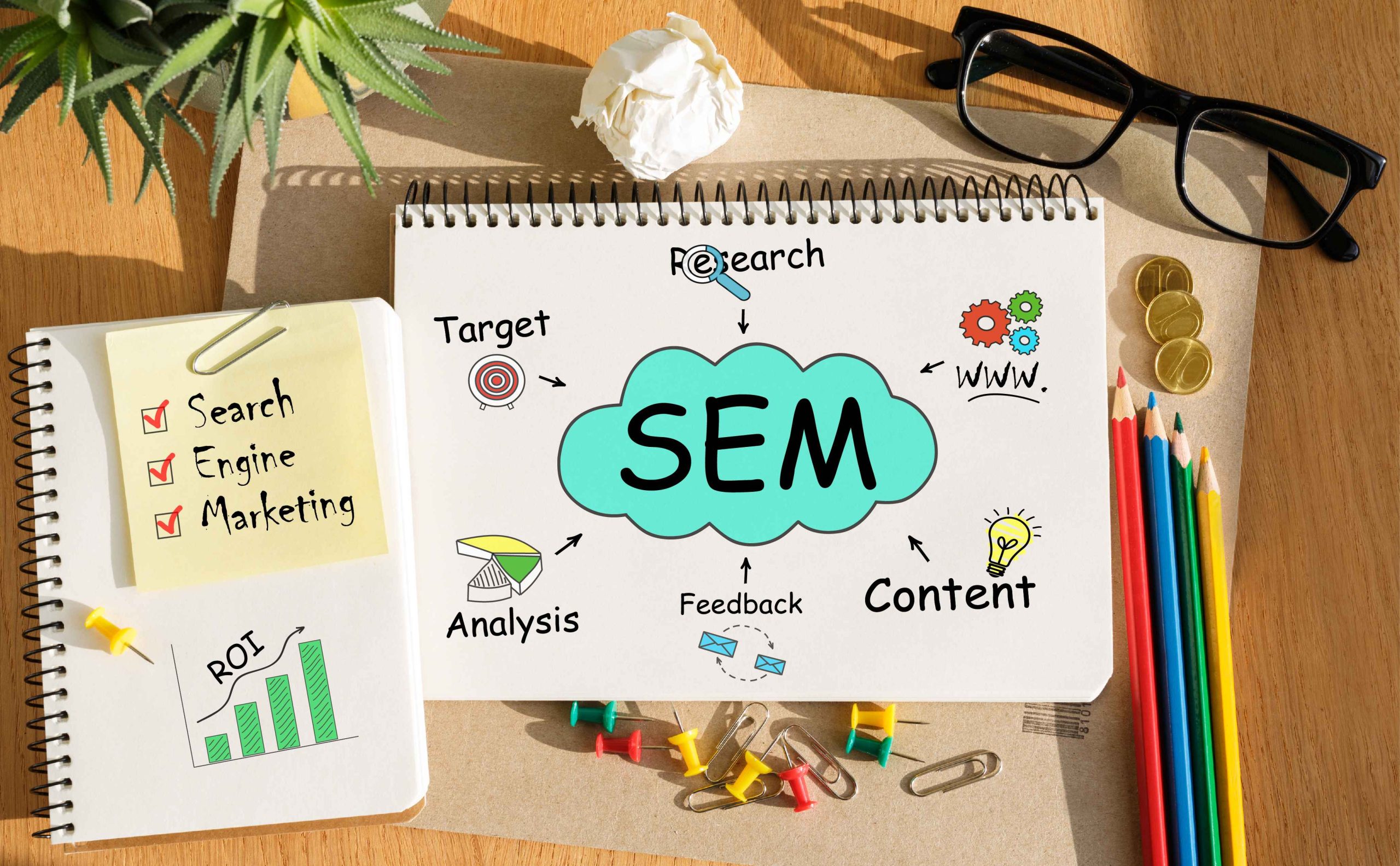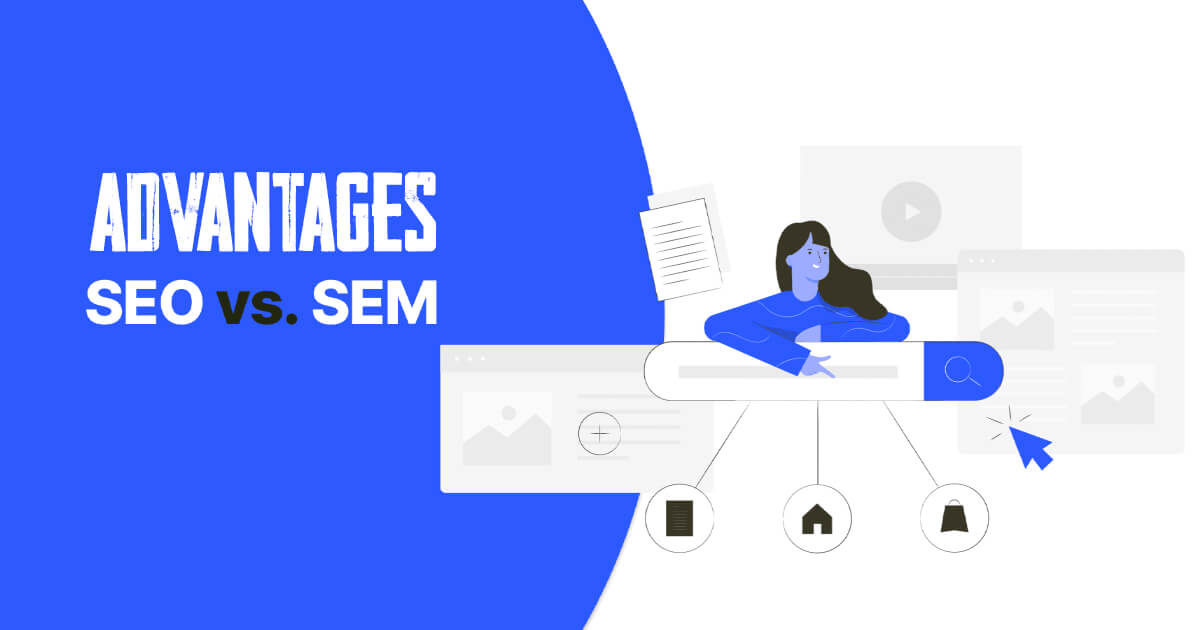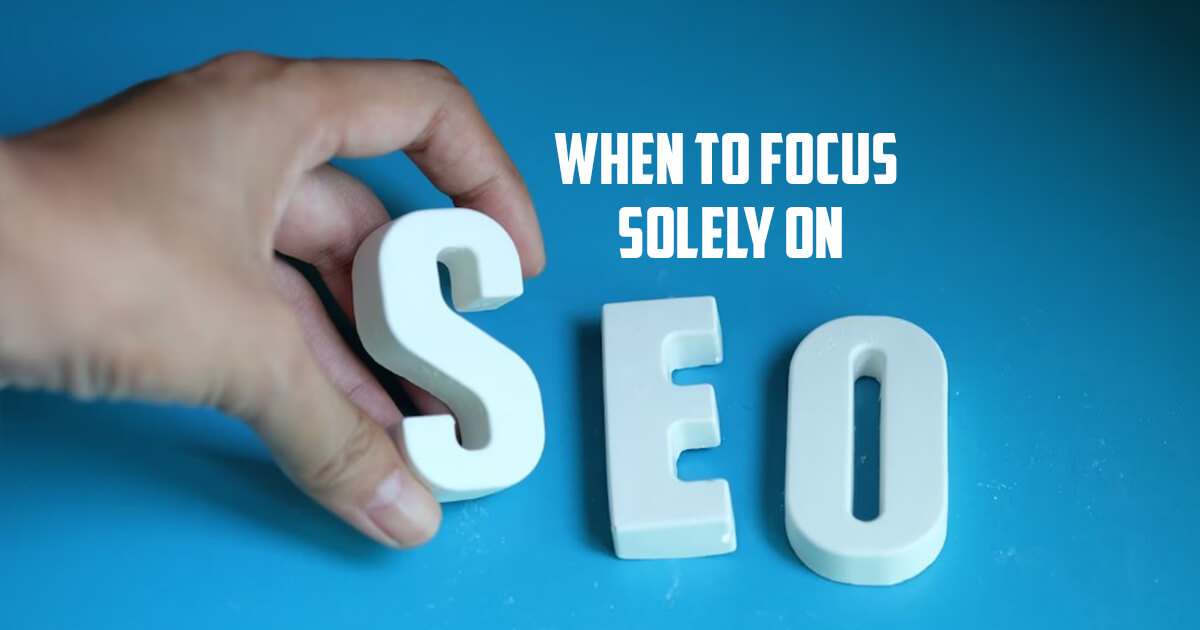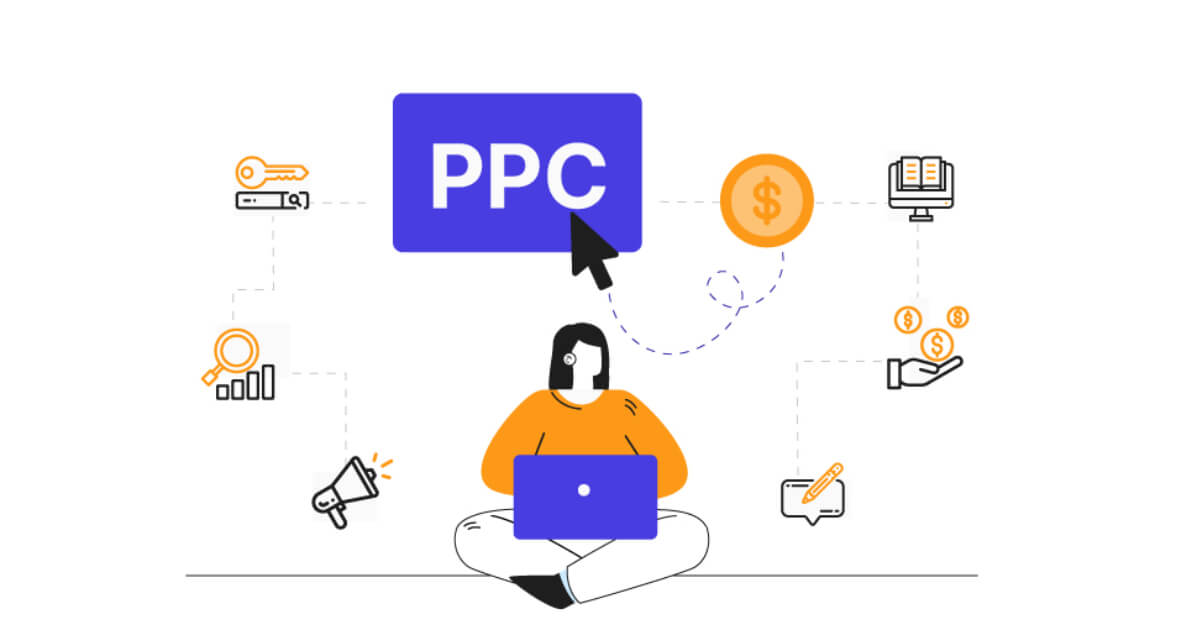When you search for something on Google, you’ll come across two primary types of results:
Organic Listings: These are the unpaid results displayed on the search engine results page. They are presented based on the search engine’s algorithm, which assesses their relevance and value in relation to the user’s query.
Paid Advertisement: These results are sponsored content, typically marked with tags such as “Ad” or “Sponsored” to set them apart from organic listings. Businesses that use these ads incur a charge each time their ad is clicked, leading to the term pay-per-click.
SEO is specifically concerned with enhancing these organic search results to improve their visibility and ranking without any payment. On the other hand, SEM encompasses a broader strategy that includes both organic and paid search results. In essence, SEO is a component within the larger SEM framework.
Keep reading this blog to learn in-depth details of the difference between search engine optimisation and search engine marketing.
Comprehending Search Engine Optimisation to Get Organic Boost
SEO is the practice of improving your website’s visibility in search engine results through organic means. The process involves several key components:
Keyword Research
Keyword research entails discovering the terms and phrases that potential customers use when searching online. Tools like SEMrush, Keyword Planner, or Moz can help identify these keywords, guiding you in choosing the most relevant ones for your content.
On-Page SEO
On-page SEO focuses on creating content that resonates with what users are looking for. This involves tailoring your content to match the search intent behind your target keywords.
For instance, if someone is searching for “how to bake sourdough bread,” they are likely seeking a detailed recipe and baking tips. Therefore, your content should provide an in-depth guide on the subject.
Conversely, searching for “best sourdough bread recipe” indicates the user is looking for top recommendations or a specific recipe. This requires a different content approach, emphasising high-quality recipes and expert advice.
Aligning your content with user intent is crucial, but on-page SEO also involves other elements, such as:
- Crafting engaging titles
- Effective keyword placement
- Optimising images
- Using clear, descriptive URLs
Off-Page SEO
Off-page SEO involves action taken outside of your website to enhance its authority and credibility. One of the most effective strategies here is acquiring high-quality backlinks. These links from other reputable sites serve as endorsements for your content.
For example, suppose your blog post on “eco-friendly home cleaning tips” receives backlinks from well-known environmental websites. In that case, it signals to search engines that your content is valuable and trustworthy.
Besides backlinks, other off-page elements like online reviews and social media mentions can also influence your search engine rankings.
Technical SEO
Technical SEO ensures that search engines can effectively locate, crawl, and index your site’s content. Without proper technical setup, your content might remain invisible to search engines.
Imagine if a website accidentally blocked search engines from accessing its content. This would prevent the search engines from understanding what the page is about, making it nearly impossible for the page to rank well.
To maintain good technical SEO, focus on aspects such as:
- Proper site architecture
- A clear sitemap
- Ensure your site is error-free
- Improve search engine access
What is SEM?
Search Engine Marketing is a strategic approach to enhance your website’s visibility by leveraging both paid and unpaid search ads. Unlike SEO, which relies on organic methods to climb SERP rankings, SEM enables you to secure prominent ad placements through financial investment.
This approach typically involves paying for each click your ad receives, with costs fluctuating based on keyword competition. To effectively launch an SEM campaign, you need the following techniques:
Keyword Exploration
The foundation of a successful SEM strategy begins with keyword exploration. This process involves selecting the right terms to target considering factors like competition and search volume, which influence your ad costs.
For instance, a competitive keyword like “car insurance” may command higher prices per click than a less sought-after term like “temporary car insurance.”
Crafting Ad Copy
Creating effective ad copy for SEM differs significantly from writing content for blogs or articles. With limited space, three thirty-character headlines and two ninety-character descriptions on Google, capturing attention quickly is crucial. Your goal is to entice users with concise, persuasive text.
Although there’s no universal formula for successful ad copy, the following are a few of the best practices to identify what resonates best with your target audience:
- Incorporate your chosen keywords
- Maintain an active voice
- Speak directly to the audience
- Test different combinations
Bidding and Audience Targeting
In SEM, you have control over how much you’re willing to spend per click, but your bid must be competitive. Setting an overly low bid may result in your ad being overshadowed by competitors with higher bids.
Moreover, precise audience targeting ensures your ads reach the right viewers. With evolving privacy standards and the phasing out of third-party cookies, exploring alternative targeting methods will be essential for effective ad placement.
Evaluating Quality Score
On platforms like Google, ads are assigned a Quality Score ranging from 1 to 10. This score reflects the relevance of your ads to users, influencing their click-through rates (CTR). Monitoring your Quality Score post-approval provides valuable feedback to refine your ads for better performance and relevance.
Advantages of SEO & SEM: What You Need to Know
SEO Benefits:
Increased Trust: Since SEO is not based on payment for visibility, it often leads to greater trust from consumers. They may perceive your brand as more authentic and reliable compared to paid advertisements.
Higher Click-Through Rates: Organic search results often outperform paid ads in CTR. For example, the top organic listing on Google boasts an impressive average CTR of 39.8%, while the leading paid ad attracts only about 2.1% of clicks, similar to the eighth organic position.
Long-Term Impact: Unlike SEM, which is directly tied to your budget, SEO offers enduring benefits. Once established, the results from your SEO efforts can continue to drive traffic and yield benefits for months or even years, even if your marketing activities are paused.
Enhanced Content Quality: SEO emphasises the creation of valuable content for users. This focus not only improves your website’s visibility but also establishes it as a credible and trusted source of information.
SEM Benefits:
Immediate Results: If you’re looking for instant visibility, SEM is the solution. It allows your page to appear at the top of search results as soon as your campaign launches, offering quick exposure compared to the slower pace of SEO.
Convenient A/B Testing: SEM campaigns make it straightforward to test different ad versions. By running A/B tests, you can quickly determine which ad variations generate the most clicks, optimising your strategy for better performance.
Precise Targeting: SEM allows for detailed targeting options to reach specific audience segments. This precision helps ensure your budget is spent effectively on the most relevant users.
Budget Flexibility: Although SEM requires financial investment, it provides control over your expenditure. For instance, if your ad budget is limited, you can focus on less expensive keywords to stretch your budget further.
SEO vs. PPC: When to Choose Each Approach
When to Focus Solely on SEO:
Long-Term Gains: Choose SEO if you’re prepared to wait 6-12 months for meaningful traffic results.
Limited Budget: Ideal for startups or small businesses with tight budgets. SEO is cost-effective over time compared to short-term PPC spending.
Link-Building Skills: Effective SEO requires high-quality content and strong link-building strategies to enhance rankings.
Informational Keywords: If you can create exceptional content for queries like “What is X” or “How to X,” SEO can drive substantial traffic.
When to Focus on PPC:
Consistent Ad Budget: PPC allows you to set a fixed budget, but you need to manage it carefully to avoid overspending.
AdWords Management Skills: Running a Google Ads account involves complex tasks like keyword targeting, Quality Score optimisation, and analysing ROI.
Landing Page Testing: PPC benefits from well-crafted, targeted landing pages. If you can quickly create and test different pages, PPC can be highly effective.
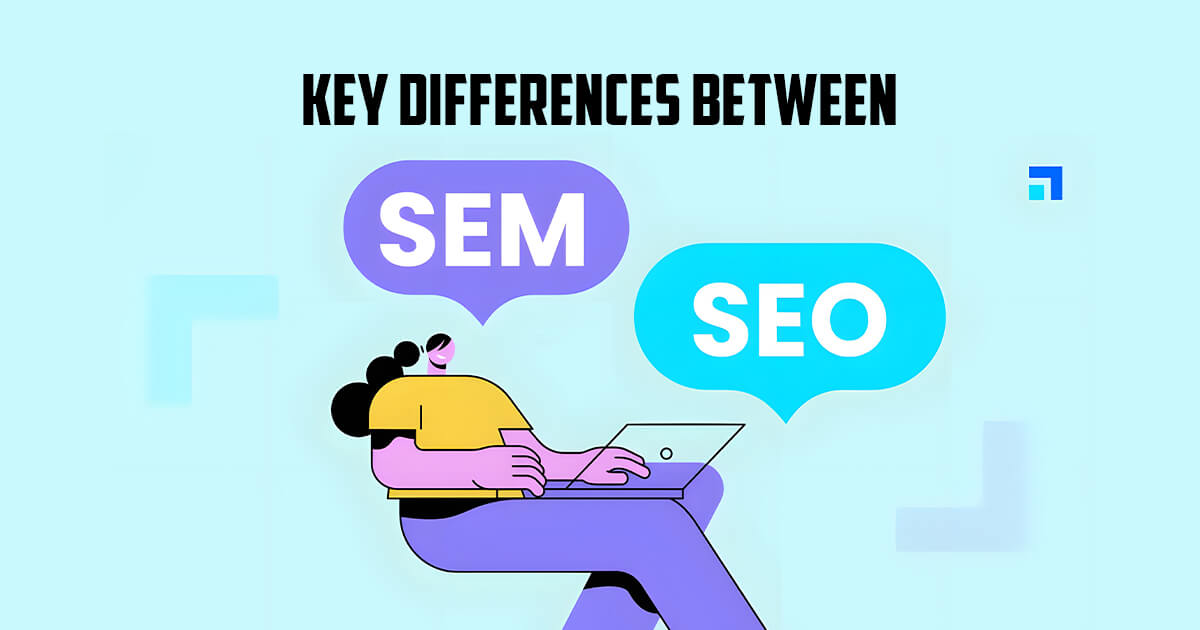
Key Differences Between SEO and SEM
Target Audience
SEO and SEM cater to distinct types of traffic. SEO targets organic, unpaid search results to enhance visibility through non-sponsored listings. In contrast, SEM encompasses both paid and organic placements on search engine results pages. While SEO and SEM can work together, SEO alone won’t influence your pay-per-click advertising performance.
Timelines for Results
The timeframes for SEO and SEM differ significantly. SEO is a gradual process, often requiring six months to a year to show noticeable improvements. On the other hand, SEM delivers quicker results, providing an immediate traffic boost. However, SEM offers short-term gains, necessitating ongoing investment and ad creation.
Cost Considerations
Cost structures vary between SEO and SEM. Typically, SEO involves higher initial expenses, including website development and professional fees, but yields long-term benefits with a stable cost profile. While cheaper upfront, SEM requires continuous funding for ads to maintain traffic, which can accumulate over time. In the long run, SEO often provides better value by generating sustained results at a lower ongoing cost.
Finding the Right Fit for Your Goals
SEO stands out as the best choice when aiming for a lasting online presence. This approach emphasises crafting high-quality content and enhancing your website’s structure, leading to enduring organic traffic and building long-term credibility.
On the other hand, SEM is ideal for achieving quick results. It delivers immediate visibility and boosts traffic, making it perfect for time-sensitive goals like promotions or new product launches.
While SEM can generate significant traffic swiftly, it’s a temporary solution. In contrast, SEO offers more sustainable benefits, positioning it as a valuable strategy for ongoing success.


